Phacoemulsification surgery for cataracts
How a cataract looks
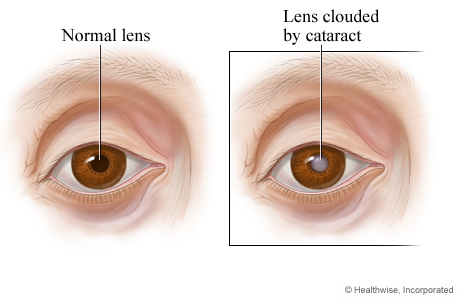
In a normal eye, the lens—which lies behind the pupil—is clear (transparent), so the pupil appears black. In an eye with a cataract, the pupil may look gray. This is because the natural lens has become cloudy, which may affect vision.
Close-up of a cataract
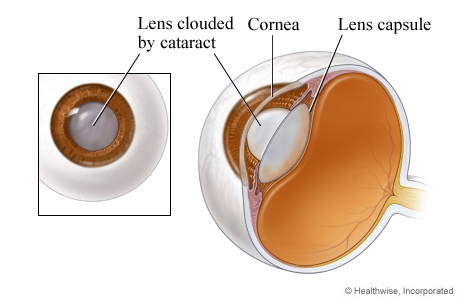
The cornea is the clear layer that covers the front of the eye. The lens is contained inside the eye's lens capsule. A cataract is a partial or complete cloudiness in the lens.
Incision for surgical instrument is made
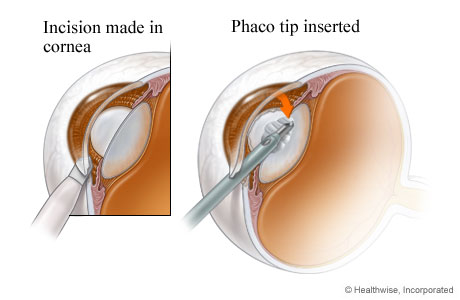
A small cut (incision) is made in the eye so a small instrument (phaco probe) can reach the cataract.
Lens is broken up and removed
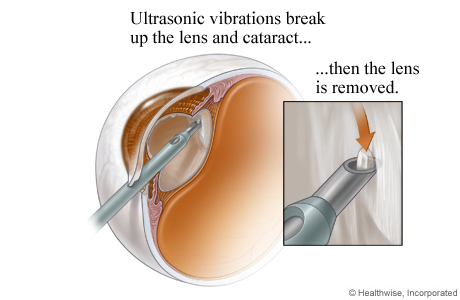
The probe uses sound waves (ultrasound) to break the cataract into small pieces. Then the surgeon uses suction to remove the cataract from the eye.
Intraocular lens (IOL)
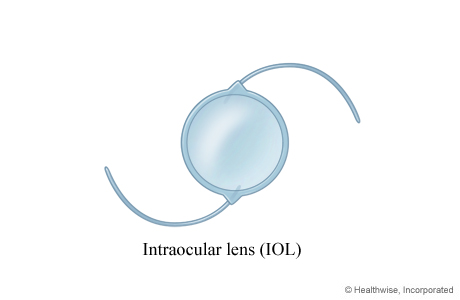
A variety of artificial lenses (intraocular lenses or IOLs) are available to replace your natural lens. Your doctor can help you choose the type that may work best for you.
A lens replacement (IOL) is inserted
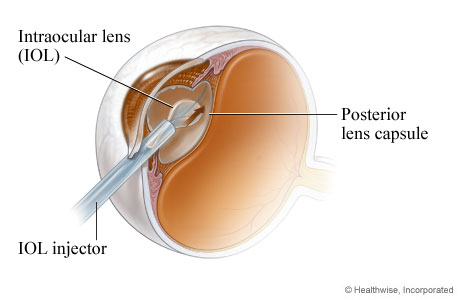
After the cataract is removed, an intraocular lens (IOL) may be placed inside the lens capsule. The back of the lens capsule (posterior capsule) keeps the IOL in place.
Intraocular lens in place
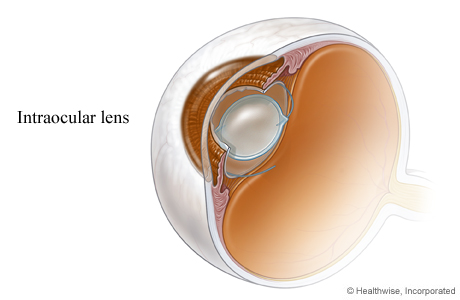
The intraocular lens (IOL) takes the place of the eye's natural lens. The incision does not usually require stitches.
Before and after cataract surgery
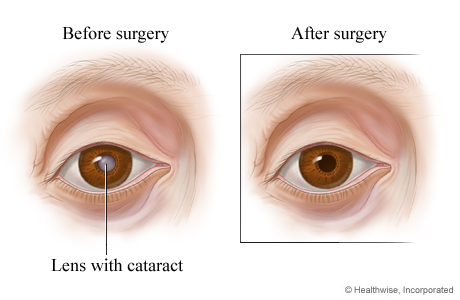
Before cataract surgery, the cloudy lens can be seen through the pupil. After cataract surgery, the pupil appears black because the intraocular lens is clear.
Current as of: July 31, 2024
Author: Ignite Healthwise, LLC Staff
Clinical Review Board
All Ignite Healthwise, LLC education is reviewed by a team that includes physicians, nurses, advanced practitioners, registered dieticians, and other healthcare professionals.


